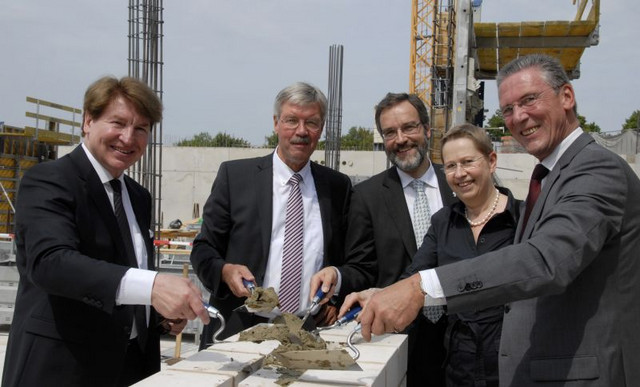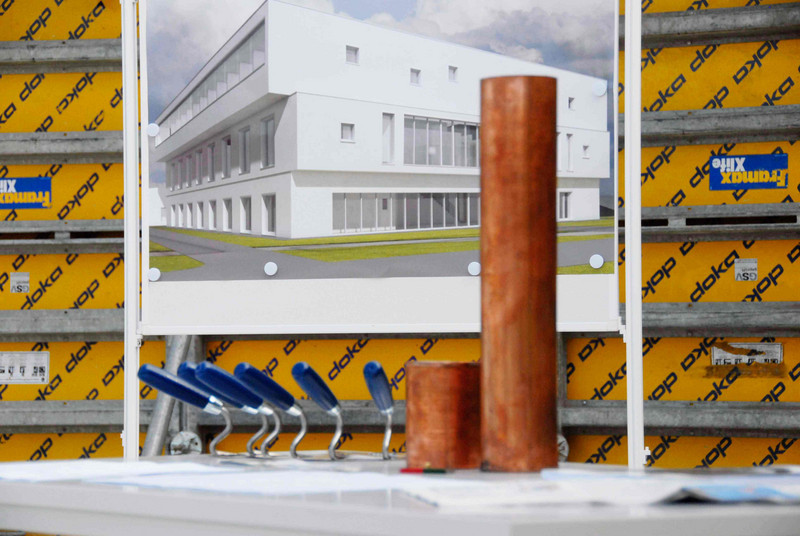Foundation stone of the MRT building laid
They were standing in the mid-day sun in suites and costumes on the construction site of the new imaging center of the DPZ and plunged their trowels into the plaster: The mayor of Göttingen Wolfgang Meyer, university president Prof. Ulrike Beisiegel, the chairman of the supervisory board of the DPZ Dr. Axel Kollatschny, director Prof. Stefan Treue, and administrative director Michael Lankeit. They bricked a time capsule into the foundation stone for the new magnetic resonance tomography building in front of about 120 guests on Wednesday, 24th July. The team play on the construction site at Hans-Adolf-Krebs Weg worked well. As the speakers pointed out, this is one of the major goals for future research in the MRT building: Good collaborations within the Goettingen Research Campus.
Stefan Treue explained the special meaning of the location Göttingen for magnetic resonance imaging, which was developed further especially by Prof. Jens Frahm from the Max Planck Institute for Biophysical Chemistry: "It therefore has a special charm to establish a new MRT facility here in Göttingen." In the future, it will be possible to gain insights into the anatomy and function of organs like the brain or the heart of non-human primates non-invasively at the DPZ. The device for human patients and larger animals like rhesus macaques will work with a magnetic field of 3 Tesla, 60,000 times more than the earth's field. A second MRT with 9.4 Tesla will be specifically fitted to smaller animals like marmosets.
The outgoing chairman of the supervisory board of the DPZ Axel Kollatschny (ministry for science and culture of Lower Saxony) pointed out that the new imaging facility would contribute to the networking of the DPZ and scientific collaboration. He also referred to the reduced stress for the primates through research with the MRT and gave an outlook to potential future advances in the treatment of heart attacks or neurodegenerative diseases like Parkinson.
Mayor Wolfgang Meyer called the building an "investment into the future" which he believes to provide the DPZ "with even better conditions for its ambitious research goals." The new imaging facility will cost about 12 million Euros, including the MRT devices. The completion is scheduled for the end of 2014. So far, the construction work is within the schedule.
University president Ulrike Beisiegel underlined that imaging is a special focus of the Göttingen Research Campus, too. She wished for a continuation and extension of the already existing cooperation with the DPZ in research and teaching. She also highlighted that the new unit for aging research, which the DPZ will establish in parallel with the new imaging facility, will add a "relevant social topic to the research fields of the Primate Center." The DPZ also plans collaborations with the Centers for Neurodegenerative Diseases and for Heart Research of the University Medicine Göttingen.
Despite the good teamwork during the foundation stone laying, the real work was left for the building experts. "It shows that our laying of the foundation stone was only symbolic. The actual building will hopefully be more stable," said Michael Lankeit laughing when looked at the result.


